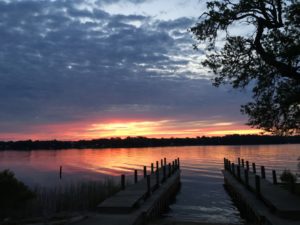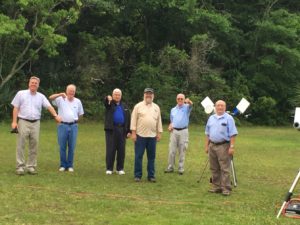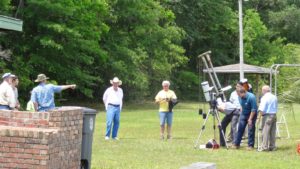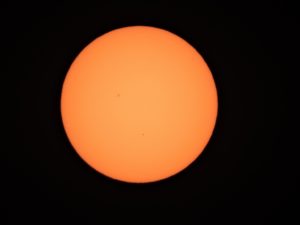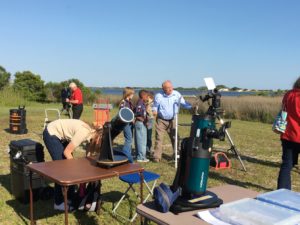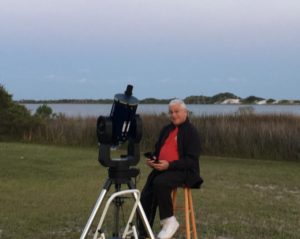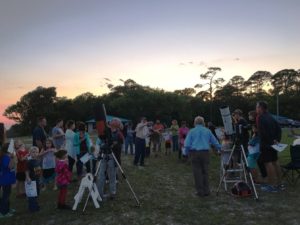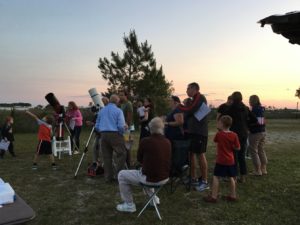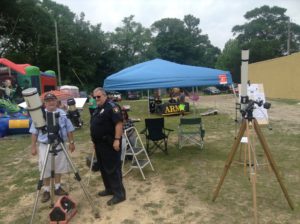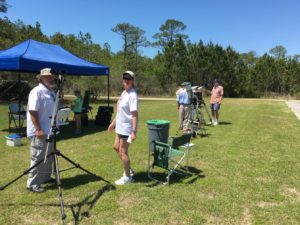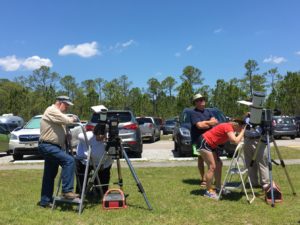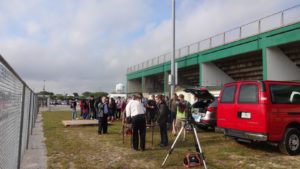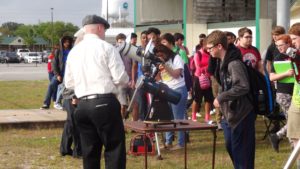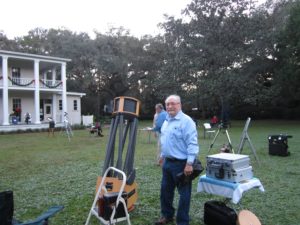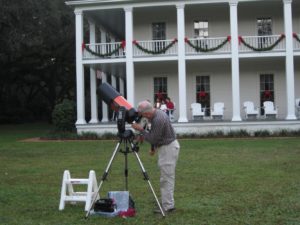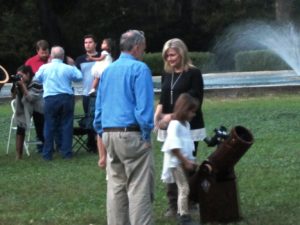The last Mercurial transit visible on the gulf coast was in 2006. The next will be visible on November 11, 2019 and then not again for 30 years. Since we don’t know what the weather will be like in 2019 several members of the NWFAA braved a gloomy forecast, early morning clouds and set up their telescopes by 6:00 AM to make sure, if we had the chance, we didn’t miss this one. Frank Atchison, Dean Covey, Tom Haugh, Dennis Hausch, Chuck Lynch and Ken Sharpe assembled at Florida Park in Valparaiso and waited for the Sun to rise and the clouds to part.
Except for breaks in the clouds that lasted mere seconds, we waited for awhile.
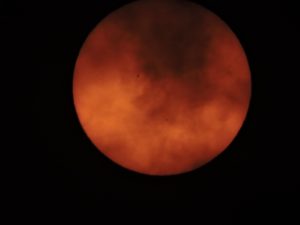
|
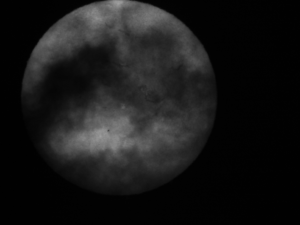
|
But our patience paid off and the later it got the bigger the holes were and towards mid-transit we had more clear sky than clouds. By mid-day club member Robert Sutphen made the drive from Crestview and joined the group. Overall, we had 13 additional guest observers view the transit. I think the questionable weather prevented others from viewing the event.
The silhouette of Mercury shared the Sun with a small sunspot group. In the images below, Mercury is the perfectly round dot on the lower half of the Sun. The sunspot is the irregular shaped blemish. Additionally, the H-Alpha image shows dark streaks (filaments) and bright areas (plages).
But the weather being what it is, as the event headed towards third contact, the clouds moved back in and the end of the transit was only marginally visible through the cloud gaps.
We need to, once again, thank our unofficial ‘official’ event photographer, Marietta Hausch, for the terrestrial photos.
